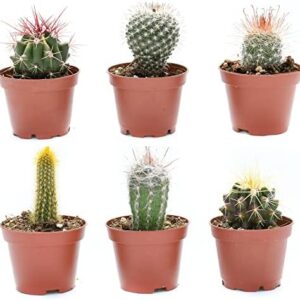Having indoor plants in your home can bring a touch of nature inside, improve air quality, and even boost your mood. But caring for indoor plants can sometimes feel like a daunting task, especially if you don’t have a green thumb. However, with a few simple steps, you can establish a successful indoor plant care routine that will keep your plants healthy and thriving.
Step 1: Choose the Right Plants for Your Space
The first step in establishing a successful indoor plant care routine is to choose the right plants for your space. Consider factors such as the amount of natural light available in your home, the temperature and humidity levels, and how much time and effort you are willing to invest in plant care.
If you have a brightly lit room with plenty of natural sunlight, you may want to consider plants that thrive in these conditions, such as succulents, cacti, or spider plants. On the other hand, if your space has low light levels, you may want to opt for plants that can tolerate shade, such as peace lilies, pothos, or snake plants.
It’s also important to consider the size of your space and the amount of space available for plants. Choose plants that will fit comfortably in your home and won’t become overcrowded or cramped.
Step 2: Establish a Watering Routine
One of the most important aspects of indoor plant care is establishing a watering routine. Different plants have different watering needs, so it’s important to research the specific care requirements of each plant in your collection.
In general, most indoor plants prefer to be watered when the top inch of soil is dry to the touch. Overwatering can lead to root rot and other issues, so it’s important to avoid watering your plants too frequently.
To establish a watering routine, consider creating a schedule or using a watering reminder app to help you stay on track. You may also want to invest in a moisture meter to help you gauge when your plants need water.
Step 3: Provide Adequate Light and Humidity
In addition to water, light and humidity are essential for the health and growth of indoor plants. Most indoor plants prefer to be placed in a location with bright, indirect light, such as near a south-facing window. However, it’s important to avoid placing plants in direct sunlight, as this can lead to sunburn and damage to the leaves.
If your space has low light levels, consider investing in a grow light to provide your plants with the light they need to thrive. You may also want to group your plants together to create a microclimate with higher humidity levels, or use a humidifier to increase the moisture in the air.
Step 4: Monitor for Pests and Diseases
Even with the best care, indoor plants can sometimes fall victim to pests and diseases. It’s important to regularly inspect your plants for signs of infestation, such as yellowing or wilting leaves, holes in the leaves, or webbing on the plant.
If you suspect that your plants have pests or diseases, it’s important to take action quickly to prevent further damage. There are a variety of natural remedies and pesticides that can help control common pests such as spider mites, aphids, and mealybugs.
In addition to monitoring for pests and diseases, it’s important to regularly clean your plants and their containers to prevent the buildup of dust, mold, and other debris that can attract pests and pathogens.
Step 5: Prune and Repot as Needed
Regular pruning and repotting are essential parts of indoor plant care that can help promote healthy growth and prevent overcrowding. Pruning can help shape your plants, remove dead or damaged foliage, and encourage new growth.
When repotting your plants, it’s important to choose a pot that is slightly larger than the current one and use a well-draining potting mix to prevent waterlogged roots. Repotting can help refresh the soil, improve drainage, and provide your plants with the space they need to grow.
By following these five essential steps to a successful indoor plant care routine, you can create a healthy and thriving indoor garden that will bring joy and beauty to your home. With a little time and effort, you can enjoy the many benefits of indoor plants and create a peaceful and inviting oasis inside your own four walls.






